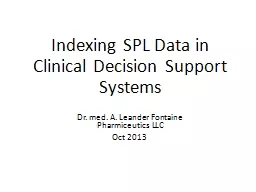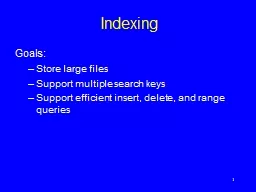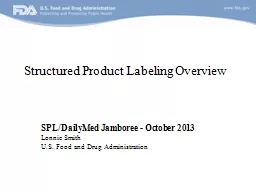PPT-Indexing SPL Data in Clinical Decision Support Systems
Author : debby-jeon | Published Date : 2018-10-23
Dr med A Leander Fontaine Pharmiceutics LLC Oct 2013 Based on FDAs 2010 indexing SPL FR notice Indexing For a label providing machinereadable tags that do not
Presentation Embed Code
Download Presentation
Download Presentation The PPT/PDF document "Indexing SPL Data in Clinical Decision S..." is the property of its rightful owner. Permission is granted to download and print the materials on this website for personal, non-commercial use only, and to display it on your personal computer provided you do not modify the materials and that you retain all copyright notices contained in the materials. By downloading content from our website, you accept the terms of this agreement.
Indexing SPL Data in Clinical Decision Support Systems: Transcript
Download Rules Of Document
"Indexing SPL Data in Clinical Decision Support Systems"The content belongs to its owner. You may download and print it for personal use, without modification, and keep all copyright notices. By downloading, you agree to these terms.
Related Documents














